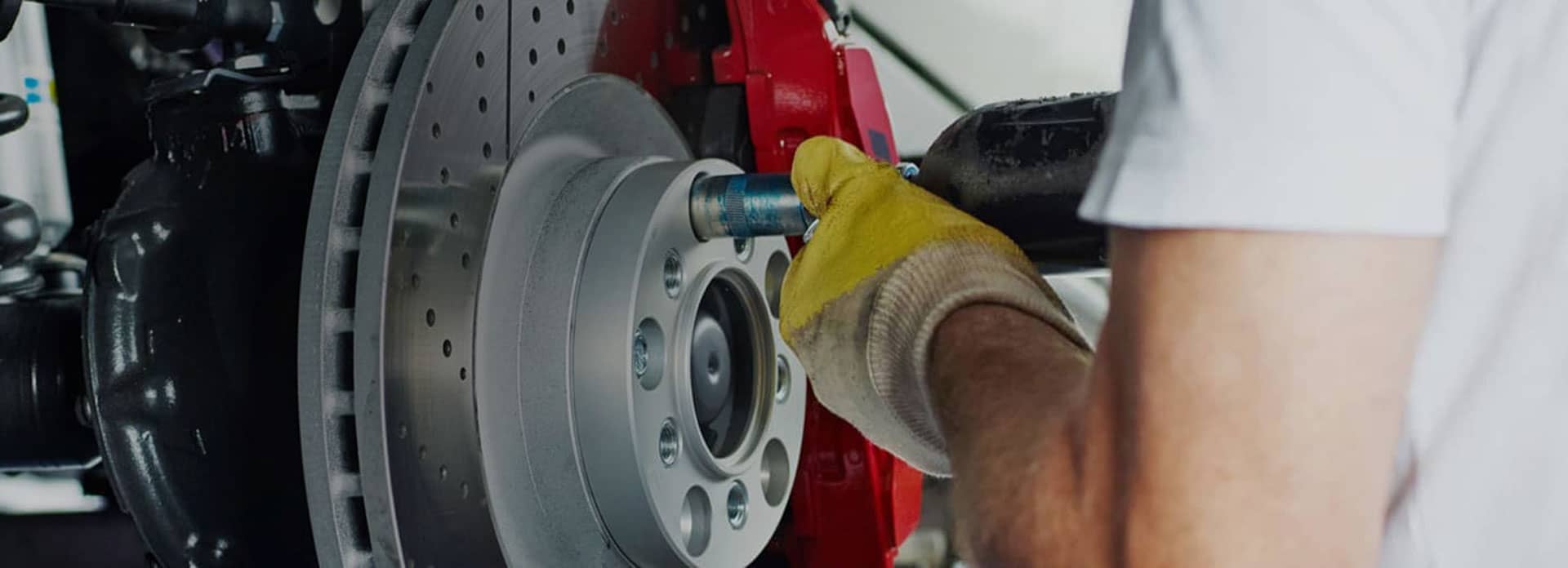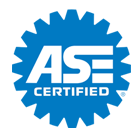
AUTONET TV
Archive for November 2022Oil's Well That Ends Well (Oil Change Grades and Weight)Posted November 27, 2022 10:20 AMChanging your oil regularly is one of the most important things you can do to keep your vehicle running well. And knowing the right type of oil to use is also very important. Engine oil is classified by weight, but it doesn't refer to how much the oil would weigh if you put it on a scale. It refers to viscosity, or how easily the oil flows through the engine. Most engines operate normally at around 210°F/99°C. The viscosity, or weight, is assigned a number by how well it flows at that temperature. The lower the number, the more freely it flows. Most vehicle engines use what's called a multigrade oil which behaves differently in different temperatures. Multigrade oils have a "W" in their viscosity number that you may have seen on a bottle of oil, something like 5W30. The W stands for winter and shows how freely it flows in colder temperatures. That means a 5W30 oil will behave like a 5 weight oil in lower temperatures (less viscous or thinner) and a 30 weight oil in warmer temperatures (more viscous or thicker). That's important on a cold day because the oil needs to behave like a thinner oil when you start your engine since it need to lubricate engine components immediately to protect the metal components. Then as the engine warms up, it behaves like a thicker oil to prevent friction among those parts. Pretty neat trick, right? The type of oil you use can differ depending on what type of climate you operate your vehicle in and how your vehicle is used (carrying big loads, towing, etc.). Your owner's manual contains several different recommendations based on these factors. Your service advisor can recommend the right oil for your needs. Like Shakespeare said, "Oil's well that ends well." autoclinic of brandon Refresh Your Brakes (Brake Fluid Exchange)Posted November 20, 2022 11:42 AMBrakes are one of your vehicle's most important safety components, and you may have noticed that they don't stop as surely as they used to. Maybe it takes you applying a little more pressure to them than before, or perhaps you get the feeling that they're not stopping you as quickly. Those could be signs that your brake fluid needs changing. Hydraulic brake systems use a fluid that enables the brakes to apply their stopping power to the wheels. That fluid can wear out, degrade, become contaminated or pick up air and moisture. All those can eventually contribute to brakes that feel sluggish. Driving with old, worn-out brake fluid may also shorten the lifespan of other braking components. Our technicians can evaluate your brake fluid to see if it needs changing. Your vehicle's manufacturer recommends how often that should be done, and when it needs changing may depend on how and where you drive. Our technicians can check the condition of your brake fluid when you have your regular oil changes. A technician will remove the old fluid and replace it with the type the vehicle manufacturer recommends. They will also bleed the air from the brake system, check it for any leaks and inspect other components such as the hoses, rotors and brake pads. Because brake fluid is combustible and toxic, it's important that it be disposed of properly so as not to create environmental damage. And just a reminder that if you continue to drive with old, contaminated brake fluid that's past its lifespan, other components of your brake system can fail. Let's face it. Brakes that don't stop you when you need them can endanger your life—and the lives of those near your vehicle. autoclinic of brandon Don't Blow a Gasket! (Valve Cover Gasket Replacement)Posted November 13, 2022 8:15 AMWhen you head out to your vehicle after it's been parked and notice oil leaking underneath it, that's something to have looked at right away. Oil leaks mean your oil level is probably low and running a vehicle in that condition can lead to expensive repairs. While there are many reasons oil leaks develop, one possibility is a bad valve cover gasket. Vehicle engines have a cover bolted over the spot where the engine valves are, and that cover keeps the oil inside the engine. In between the cover and the engine is a gasket that keeps that seal tight. But after many years of high engine temperatures and vibrations, that gasket or the bolts that hold on the valve cover can fail or loosen, and oil can leak. You may see dirty oil on the valve cover in the engine compartment, near the spark plugs, or around the bolts that hold the valve cover on. All those are signs of leakage and time to bring your vehicle in for our technicians to check out. In some vehicles, taking off the valve cover and replacing the gasket is a relatively easy job. In some models, though, other engine parts are located near that part of the engine and must be removed to get at the gasket, so repair costs can vary widely. The technician will measure to make sure the valve cover isn't warped so it can be reused. If it is warped, they'll recommend replacing it with the gasket. While the technician has that area of your engine accessible, they will also check to see if other components need replacing at the same time, which could save you money. And because valve cover gaskets usually fail in older vehicles, the technician will check for other oil leaks then, too. One of the best ways to be sure your valve cover is doing its job is to have your vehicle regularly maintained. The technician will periodically look over your engine compartment and make sure you know when things are showing signs of age and wear BEFORE they fail and leave you stranded. autoclinic of brandon Snake in the Engine (Serpentine Belt)Posted November 6, 2022 12:06 PMThere's a belt that snakes through your engine. It's even named for a snake, the serpentine belt. It'll bite you when it breaks, possibly leaving you stranded. So, it's good to know a little about this snake-like belt. In early engines, there were lots of belts. They were used to convert the rotating power of the engine to turn a mechanical part. But engineers had an idea. Why not consolidate all those belts into one that ran a bunch of different parts simultaneously? Voila! The serpentine belt. It's found in the front or side of your engine unlike older belts which were often in a V shape, the serpentine belt has ribs on it which more effectively connect with the pulleys that power the other components. A serpentine belt may power the water pump, power steering pump, alternator, and the air conditioning: all from one crankshaft. Now, all that's fine when everything is working well and the belt is intact. But when a serpentine belt wears, gets loose, or breaks, it can affect many engine components at once. Not an ideal situation. If you hear squeals coming from the engine compartment, see a battery light, or the engine overheats, those could be signs that your serpentine belt needs replacing. The good news is that they usually last a long time, from 60,000-100,000 miles or 100,000-160,000 km. Still, they don't last forever, and your vehicle's manufacturer usually recommends replacing them when they've gone close to the expected maximum. It’s also recommended that you replace the pulleys and belt tensioner at the same time as they have the same service life. Regular maintenance and inspection of the serpentine belt is not only a good idea; it’s one of those things that you should not let "slip" by. autoclinic of brandon | ||
SearchArchiveDecember 2009 (3)January 2010 (3) February 2010 (4) March 2010 (4) April 2010 (5) May 2010 (2) June 2010 (1) July 2010 (4) August 2010 (4) September 2010 (3) October 2010 (3) November 2010 (4) December 2010 (5) January 2011 (4) February 2011 (4) March 2011 (5) April 2011 (4) May 2011 (4) June 2011 (1) August 2011 (3) September 2011 (3) October 2011 (2) December 2011 (4) February 2012 (2) March 2012 (4) April 2012 (4) May 2012 (1) June 2012 (3) July 2012 (1) August 2012 (1) November 2012 (1) December 2012 (2) March 2013 (1) April 2013 (4) May 2013 (1) September 2013 (1) October 2013 (5) November 2013 (2) January 2014 (2) February 2014 (4) March 2014 (1) July 2014 (4) August 2014 (7) September 2014 (4) October 2014 (5) November 2014 (4) December 2014 (4) January 2015 (5) February 2015 (4) March 2015 (4) April 2015 (4) May 2015 (3) June 2015 (5) July 2015 (1) September 2015 (2) October 2015 (4) November 2015 (5) December 2015 (2) February 2016 (2) March 2016 (3) April 2016 (4) May 2016 (5) June 2016 (4) July 2016 (5) August 2016 (4) September 2016 (4) October 2016 (4) November 2016 (5) December 2016 (4) January 2017 (5) February 2017 (4) March 2017 (4) April 2017 (4) May 2017 (5) June 2017 (4) July 2017 (5) August 2017 (3) September 2017 (3) October 2017 (4) November 2017 (5) December 2017 (3) January 2018 (5) February 2018 (4) March 2018 (4) April 2018 (5) May 2018 (4) June 2018 (3) July 2018 (5) August 2018 (4) September 2018 (5) October 2018 (4) November 2018 (4) December 2018 (5) January 2019 (5) February 2019 (4) March 2019 (5) April 2019 (4) May 2019 (4) June 2019 (5) July 2019 (4) August 2019 (4) September 2019 (5) October 2019 (4) November 2019 (4) December 2019 (5) January 2020 (5) February 2020 (4) March 2020 (5) April 2020 (4) May 2020 (5) June 2020 (4) July 2020 (4) August 2020 (5) September 2020 (4) October 2020 (4) November 2020 (5) December 2020 (4) January 2021 (6) February 2021 (4) March 2021 (4) April 2021 (4) May 2021 (5) June 2021 (4) July 2021 (4) August 2021 (5) September 2021 (4) October 2021 (5) November 2021 (4) December 2021 (4) January 2022 (6) February 2022 (4) March 2022 (4) April 2022 (4) May 2022 (5) June 2022 (4) July 2022 (5) August 2022 (2) September 2022 (4) October 2022 (5) November 2022 (4) December 2022 (4) January 2023 (5) February 2023 (4) March 2023 (4) April 2023 (5) May 2023 (4) June 2023 (4) July 2023 (5) August 2023 (4) September 2023 (3) October 2023 (3) January 2024 (1) February 2024 (4) | CategoriesAir Conditioning (17)Alignment (16)Alternator (6)Auto Safety (6)Automotive News (8)Battery (20)Brake Service (4)Brakes (22)Cabin Air Filter (8)Check Engine Light (6)Cooling System (19)Customer Detective Work (1)Dashboard (3)Diagnostics (5)Diesel Maintenance (1)Differential Service (3)Drive Train (9)Emergency Items (1)Engine Air Filter (2)Exhaust (12)Fluids (16)Fuel Economy (10)Fuel Pump (1)Fuel Saving Tip: Slow Down (2)Fuel System (46)Headlamps (6)Inspection (10)Keys to a long lasting vehicle (4)Maintenance (52)Monitoring System (3)Oil Change (7)Older Vehicles (4)Parts (7)PCV Valve (2)Safe Driving (1)Safety (6)Serpentine Belt (6)Service Intervals (9)Service Standards (12)Shocks & Struts (9)Shocks and Struts (1)Spark Plugs (2)Steering (14)Suspension (3)Timing Belt (6)Tire Rotation and Balancing (3)Tires (10)Tires and Wheels (40)TPMS (3)Transfer Case Service (1)Transmission (11)Trip Inspection (4)Warranty (1)Water Pump (1)What Customers Should Know (81)Wheel Bearings (1)Windshield Wipers (9)Winter Prep (7)Winter Tires (1) | |

Get free Coupons
Take advantage of these great offers!



.png)






